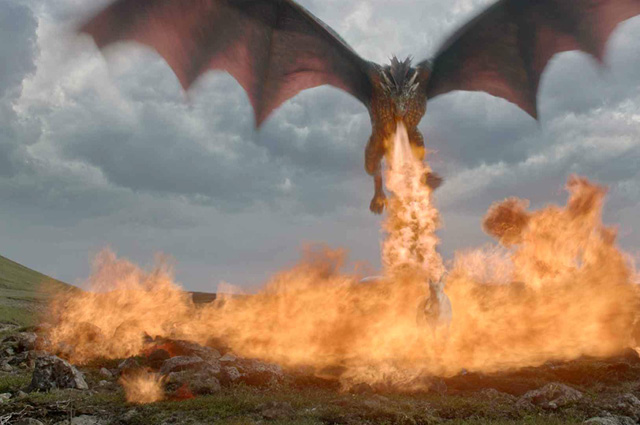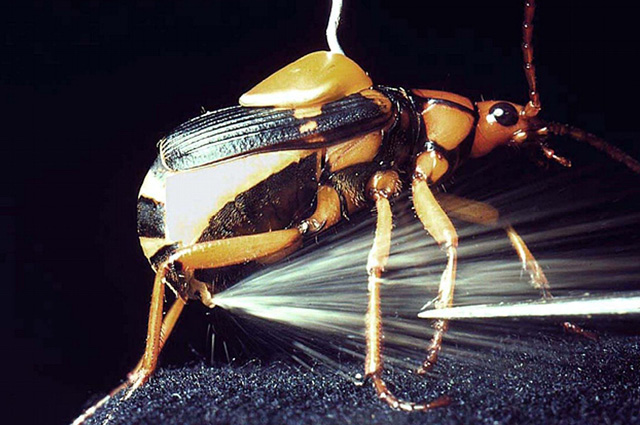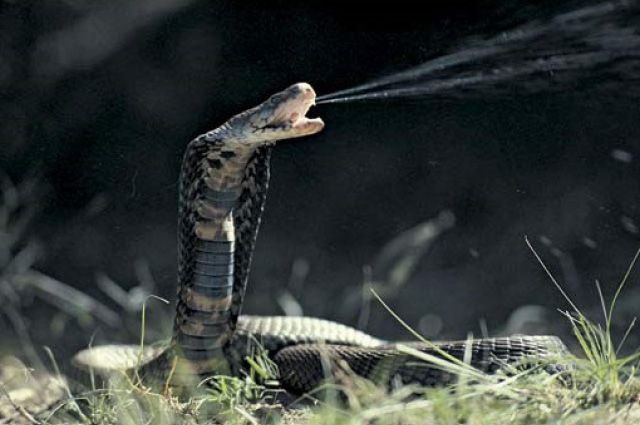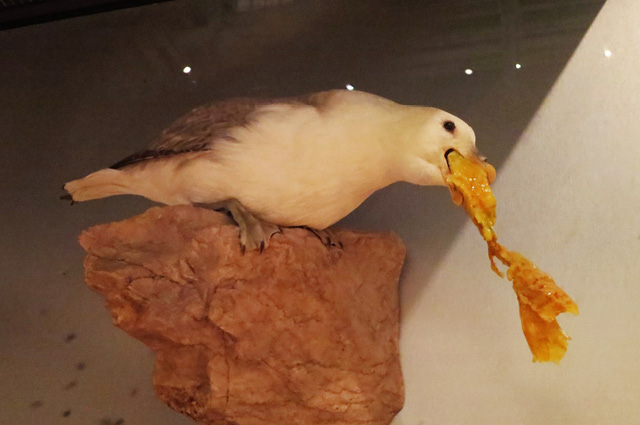Following the conclusion of the latest series of Game of Thrones, many of us at RSB have been excited by the fire breathing capabilities of the three dragons, daughters of one of the show’s protagonists, Daenerys Targaryen.
A number of theories have been developed by fans of the show to explain how these creatures might be able to produce and discharge plumes of fire from their mouths, the most popular of which claims that two tubes at the back of the dragons’ throats expel two volatile substances which, when combined, produce a vigorous exothermic reaction.

Could dragons exist in real life? Photo credit: HBO
Whilst the mythical nature of dragons on Planet Earth somewhat restricts our abilities to investigate such a phenomenon, there are many examples of chemical warfare amongst organisms which may have influenced the show’s creators that live closer to home than Westeros.
The bombardier beetle is perhaps the closest the Earth’s animal kingdom comes to the fire producing abilities of dragons. The beetle, found on every continent but Antarctica has a remarkable defence mechanism against predators.

The bombardier beetle’s defense mechanism in action, directed at forceps pinching the right foreleg. Photo credit: PLOS ONE
Within the beetle’s abdomen are two glands which contain a mixture of catalases and peroxidases as well as a chamber containing a solution hydrogen peroxide and hydroquinones.
When the bombardier feels threatened it allows the solutions in the chamber to mix with the catalases and peroxidases causing the hydrogen peroxide to decompose into water and steam while the hydroquinones are oxidised.
The reaction is highly exothermic and causes the temperature of the mixture to reach just under 100 degrees celsius. The resulting pressure build up causes the mixture to be expelled explosively from the beetle’s glands, located near its anus.
This combination of near boiling temperatures and oxidised hydroquinones, a chemical particularly irritating to the eyes and nervous system, can be fired twenty times by the beetle in a volley of noxious discharges.
While the beetle is currently unable to produce the steel-melting flames that viewers of Game of Thrones have seen unleashed across Westeros and beyond, who knows what the bombardier would be capable of if they were the size of a Boeing 727?
Perhaps we should look to the class of Reptilia, a class to which the dragons of Game of Thrones probably belong to, for an alternative firing system.
Despite there being no known examples of organisms capable of breathing fire the concept of dragons as flame-spewing mythical creatures is well known across the world. It would be reasonable to expect that like most legendary beasts, the myth of the dragon was inspired by the natural world.
Spitting cobras has been hypothesised by some as the origin of the fire-breathing dragon. Not all cobras are capable of spiting venom, however there are seven African and seven Asiatic species of cobra from the Naja genus that do have this ability. The front fangs of these cobra have a front facing hole from which the venom is secreted with enough force to travel two metres in some cases.

Naja mossambica, native to Mozambique can “spit” its venom 2-3 metres in length. Photo credit: Getty Images
Unlike the fangs of non-spitting cobras, the openings in the fangs are rifled like the barrel of a gun, causing the venom to spin like a bullet forced out of the chamber.
The venom from spitting cobras is highly toxic and is likely to cause fatalities in humans when not treated; it is unlikely to cause injury if contact is only with skin but if the poison finds its ways into a victims eyes it is likely to cause blindness.
If the creators of the show’s dragons have indeed drawn influence from the animal world, the bombardier beetle provides the exothermic ignition spark, and the spitting cobra provides the front facing firing system but the last missing ingredient is a source of flammable fuel.
Fulmars, like the dragons of Game of Thrones, are winged animals. Unlike the dragons in Game of Thrones, fulmars are small birds and do not possess the ability to exhale flames. They do however produce an oil in their stomachs made up of wax esters and triglycerides.

A fulmar projectile vomiting oil stored in a gland in its stomach. Photo credit: svpow.com
The oil is a product of the digestion of the sea-life on which the fulmars feast and has a high energy content, close to that of diesel. When threatened the birds eject this foul smelling oil from the proventriculust then out of their mouths towards suspected predators or rivals.
Fulmars do not have the means to ignite the oil they eject, nor the capacity to accurately squirt the oil over distance, which is fortunate as the idea of biotic flamethrowers flying over the North Sea is enough to stop me ever going on a boat again.
Dragons could store a highly oil, produced from their carnivorous diet, in the proventriculust, firing jets of the oil out of the rifled chambers within the holes in the back of their throats. This accurately fired flammable projectile would be ignited in the mouth by an explosive exothermic reaction similar to that in the abdomen of the bombardier beetle.
Using examples from nature, perhaps the notion of an animal capable of spitting flames is not as fantastical as it first seems.
On the other hand, perhaps we’ve all been watching too much Game of Thrones.

